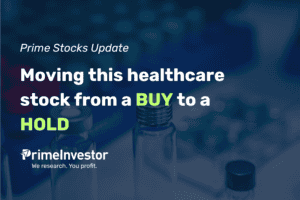If you’ve been in the Indian stock market for a while and have survived 40-50% crashes a couple of times, you begin to worry when you see absolute consensus among market participants that things can only get better from here.
As the Nifty trebled from its Covid lows below 8000 to sail past 21000 recently, it was only to be expected that TV anchors would cut cake and shower champagne on each other. But confident predictions by social media investors that this is just the beginning of an Amrut Kaal for Indian stocks, have made me wonder if the long-elusive market bubble in Indian markets is finally here.

Behaviour vs valuations in market bubbles
Calling a market bubble has been a hazardous occupation for Indian market watchers in the last five years. Early birds who booked profits in February 2021 because the Nifty was trading at a nose-bleed PE of 40 times, have had reason to kick themselves.
That PE has rapidly normalised in the last three years, with the Nifty’s Earnings Per Share (EPS) almost tripling. As revenues and earnings of India Inc rebounded from Covid, the Nifty EPS has shot up from about Rs 367 in March 2021 to Rs 936 in December 2023 (Source: Trendlyne).
The Nifty PE at about 22 times on a trailing basis today is not really frothy. Not compared to levels of 26-28 that prevailed during previous bubble markets in February 2000 and January 2008. Nifty’s Price to Book Value, seen to be a more mature measure of market valuation, has also moderated from 4.8 times in July 2023 to about 3.7 times now. The official level for bubble territory is 6 times.
But in my personal experience, I’ve found that behavioural indicators – which show the extent to which investors in the market are consumed by greed or fear – are more reliable indicators of a market bubble than dry valuation metrics. Behaviourally speaking, the Indian stock market is displaying five clear signs of a steadily inflating bubble today.
#1 IPO fetish
In India, mammoth-sized IPOs attracting crazy over-subscriptions have always been a sign of a market that is too hot to handle. In 2000, it was IPOs from the much-loved ICE sectors (IT, communications, entertainment). In 2007-08, it was infra and capital goods IPOs. Reliance Power’s ability to raise over Rs 11,000 crore when its 12 power projects were still on the drawing board, was the peak bubble moment in that cycle.
Data from Prime Database shows that in the last 30 years, new highs in IPO fund-raising have neatly marked out market tops. IPO subscriptions made new records in 1994-95 (Rs 12,928 crore), 2007-08 (Rs 52,219 crore), 2017-18 (Rs 98,984 crore) and 2021-22 (Rs 1,30,376 crore). Each of the first three years marked the top of a bull market, with a sizeable decline following.
So far in 2023-24, with Rs 57,047 crore raised from IPOs, we are yet to beat the 2021-22 number. But the FOMO surrounding IPOs after eye-popping gains on Tata Technologies and IREDA suggest that it won’t be long before new records are made.
If main board IPOs are readying to get there, SME IPOs have been in mega-bubble territory for some time now. What can you say when the BSE SME IPO index is up 32 times (not per cent) from 1,400 to 46,500 in the last four years, with these kinds of scams doing the rounds?
#2 Newbie enthusiasm
There are some market phases where retail folks who shy away from mutual funds (because mutual funds are subject to market risks, you know) develop a yen for direct equities and take to opening demat accounts at a furious pace. Such sudden enthusiasm from newbie investors, which shows greed winning over natural caution, is a nice sign of a brewing bubble.
In March 2020, India was home to just 4 crore demat accounts, and the depositories were struggling to add 40-50 lakh demat accounts in a year. But in 2023, depositories have been adding about 30 lakh demat accounts a month!
With the total demat tally at 13.5 crore accounts by November 2023, 70% of demat accounts in India have been added in the last 4 years. Now, optimists will see this as the dawn of a new equity cult in India, which will channel capital into productive enterprises and boost the capex cycle etc.
But the reality is that a majority of new demat accounts are being opened by
a) retail folks bidding in their spouse or in-laws’ names in IPOs
b) youngsters who have developed an affinity for options trading from Youtube or Telegram gurus.
This Axis MF report lays down in fascinating detail how 99.6% of India’s $4 trillion market volumes now originates from derivatives, while delivery-based trades and cash volumes remain minuscule. India is now home to 4 crore active derivative traders, a majority being retail folk from the non-metros.
As stock prices have been on a one-way journey to the moon since March 2020, it follows that 70% of demat account owners in India have never seen a real-life correction, leave alone an apocalyptic event like the 2008 crash (the Nifty fell 52%). The real test of the equity cult will arrive when the Indian market corrects 20 or 25% (individual stocks may lose much more) in response to a reversal in liquidity or fundamentals.
#3 Easy money
A decade ago, when the stock market was flat as a dosa, I had the opportunity to interview a star fund manager. He told me that the time to get worried about markets, was when it became laughably easy to make money. “In bear markets, equity research notes run into 40 pages and still don’t work. In bull markets, they have just 4 lines and work instantly” he quipped.
Going by the investment arguments being floated around for some of the popular themes today, he’d be worried. From going ga-ga over railway PSU stocks because “the government has big plans for the Railways” to chasing after IREDA at twice the valuation of HDFC Bank because “green energy is the future”, investment theses for buying into the racing names are getting feebler by the day. This tweet by Samir Arora says it all.
In “One Up on Wall Street” Peter Lynch describes what happens in cocktail parties in four stages of a market cycle. In the first stage when markets are down, if he told party-goers he was an equity manager, they’d politely move away. In the last stage of a bull run, he’d be mobbed by dentists and random party-goers giving him stock tips! Today, you don’t even need to attend a cocktail party. There are any number of Twitter handles telling us how anyone can retire at 35, by just buying and holding stocks that will give a 25% CAGR over the next 10 years.
If newbie investors are minting money on random names while seasoned folks wait on the sidelines trying to rationalise stock prices, it’s time to be wary.
#4 Penny stock party
No bubble in India can be officially declared as authentic without a party in penny stocks. Until this year, newbie investors were content with punting on IPOs and F&O.
But in 2023, penny stocks have begun to turn their favourites. First, you’ve had stocks of companies knocking at the doors of Bankruptcy Courts zooming like there is no tomorrow (and there may be no tomorrow, if the resolution plan sees equity written off). So you have the likes of Unitech, PC Jewellers and Café Coffee Day turning multi-baggers. Then, you have obscure firms under investigation by multiple regulators, be it Brightcom Group or Radhe Developers running up. But it is the last straw when the darlings of the 2007 bull market, which were burnt to the ground in the crash of 2008, rise again like phoenix. Suzlon and GTL Infra are instances.
#5 Promoter selling
At the market level, direct retail holdings in NSE-listed companies recently hit a new high of 7.6% in end-September 2023, while promoter stakes in the same companies fell to a four-year low of 41.6% (Source: Prime Database). Promoters of India Inc as well as private equity funds have been busy diluting their stakes in the fancied companies through market sales, block deals and QIPs. If an Amrut Kaal is indeed ahead for Indian companies, would promoters – who know their business better than any public investor – be cashing out?
Playing devil’s advocate
Okay, behavioural indicators show that there’s plenty of greed at play in the markets. But isn’t it actually true that the Indian stock market has a lot going for it? Big-name brokers and institutions have been putting out bullish reports based on the following:
- India is the fastest growing economy in the world. The better-than-expected Q3 GDP print of 7.6% reinforces this.
- Recent Assembly elections do away with political uncertainty. They show that NDA will likely return with a majority.
- The TINA factor will make FPIs increase weights to India as it is the fastest growing large economy without China’s political baggage.
- FPI flows are already picking up. They net invested over $6 billion in the first 20 days of December.
- The US Fed has made a dovish pivot and will be cutting rates in 2024. This will lead to a risk-on scenario, which will bring in even more FPI flows.
While all the factoids mentioned above are individually correct, they are also quite widely known. Therefore, it is highly likely that they are being factored into stock prices even as we write this.
And while the market seems to be factoring in the best-case scenario on the above events, what if we play devil’s advocate?
- Recent GDP numbers showed government capex doing the heavy lifting on growth, with slowing private consumption. What if this trend accelerates?
- In terms of economic policies, the NDA has not been more market-friendly or less welfare-driven than the UPA. What if NDA decides to raise tax revenues by imposing a wealth tax or higher rate of capital gains tax, to fund new welfare schemes?
- India’s large valuation premium over other markets shows that the TINA factor could already be built into prices.
- There’s a large contingent of FPIs who take asset or country positions based on event arbitrage. What if the recent pickup in FPI flows (after Assembly elections) is from short-term oriented FPIs betting on the general election outcome? If this is true, a correction may be in the offing post elections.
- Global markets have been speculating on a US soft landing and Fed pivot for many months now.
If you assign even a small probability to the above outcomes, you will be inclined to turn more cautious on Amrut Kaal predictions.
What to do
If we’ve got you convinced that there is some possibility of a brewing bubble, what portfolio actions should you take? The lessons we shared on this previous article still hold good. Meanwhile, here are some tips specific to the situation:
- Take the money you need for goals within the next 3 years out of equities
- Hang on to your fundamentally sound stocks
- Don’t over-bet on popular themes based on macro narratives
- Take profits on stocks you bought on borrowed conviction
- Unwind leveraged trades and investments
- Don’t have too many open positions in stocks/sectors you bought for momentum or tactical reasons
- Finally and very importantly, don’t make drastic changes to your asset allocation based on the market outlook, whether it is maxing out equities or cashing out of them altogether. Stick to your original asset allocation plan (hopefully the one you had before this bull run!). If your current asset allocation is higher than your intended allocation, bring it back to the original. This will help you cash in on those profits. Continue with your SIPs – and in the event of markets correcting, make sure you don’t stop them!
What if you’re a seasoned investor and follow all the above safeguards? Well, if you know that the music can stop any time and are prepared to lose money, sure, go ahead and participate in the bubble. Why say no to easy money? 😊
And do watch out for the PrimeInvestor research team’s 2024 equity market outlook in January! We’ll have more to say on markets then!






22 thoughts on “5 signs of a brewing market bubble”
From December 19th to today, 23rd May 24, the markets have gone up even more. At an age of 63 and being born. in the Flower Power years, one has seen one’s shares of ups n downs, Y2K, the 2008 scam and what not.
There was a time when all almost every single investment advisor or company did, is churn your portfolios. From there we have come to data mining, computer based offerings like yours and other companies like Dezerv n Wright. I watch with interest the SmallCase offerings for instance. As you rightly point out, after the Covid rout, it has been a literal run up, with some movement. What you said in Dec 19th there fore must be even more strident now?
I see for example you have been judious in taking off PrimeAuto subscriptions which show integrity and clarity. How many such players still? I am a new subscriber to your channel and am enjoying the low nice, no tamasha articles from your group. Many thanks.
I am not so sure if it is only Greed. I think it is the small man also wishing that he makes a bit more money, and why should he not. I read the book “The Ponzi Factor” and philosophically tend to actual find an echo because: A bit of FOMO too, and at time TINA?
“The idea is the only way to “cash out” these stocks is if there are other investors willing to pay what is being asked for the stock regardless of company performance. And if there are no new investors to buy the stock, the stock owner is left holding nothing of value; hence a Ponzi scheme.”
I look at thinks from a much bigger canvas and yes, I wanted to make money and I did. Not on the stock market but in the normal boring selling a physical product way. I was not averse to making some money to beat the inflation so bought mostly Debt and Short money market funds. Today I see what a moron I have been. So there will be greed and there will be greater greed, and then the question of Needs and Wants.
What’s your take on the book if you have read it? All the verbosity above was to ask this, but needed to lay out a meaningful premise? And are we closer to a correction? I know eventually one will come and no one still has a Crystal Ball and blaming it to the Feds and the Illuminati would be an oversimplification but I do want a simple life, na?
Thank you for the excellent articles. Have not written for a long time and wanted to exercise both the fingers and the mind. Namaskaram and stay well.
Thank you for that long and enjoyable note. All those bubble signs are intact today 😬 a good lesson that markets can remain irrational longer than you can remain solvent. The only triggers I see for a correction now are election results that lead to some kind of coalition or a disappointing budget after the new govt is installed. But the economy is doing really well and lots of people have FOMO from missing this rally, so the correction can be shallow.
Comments are closed.